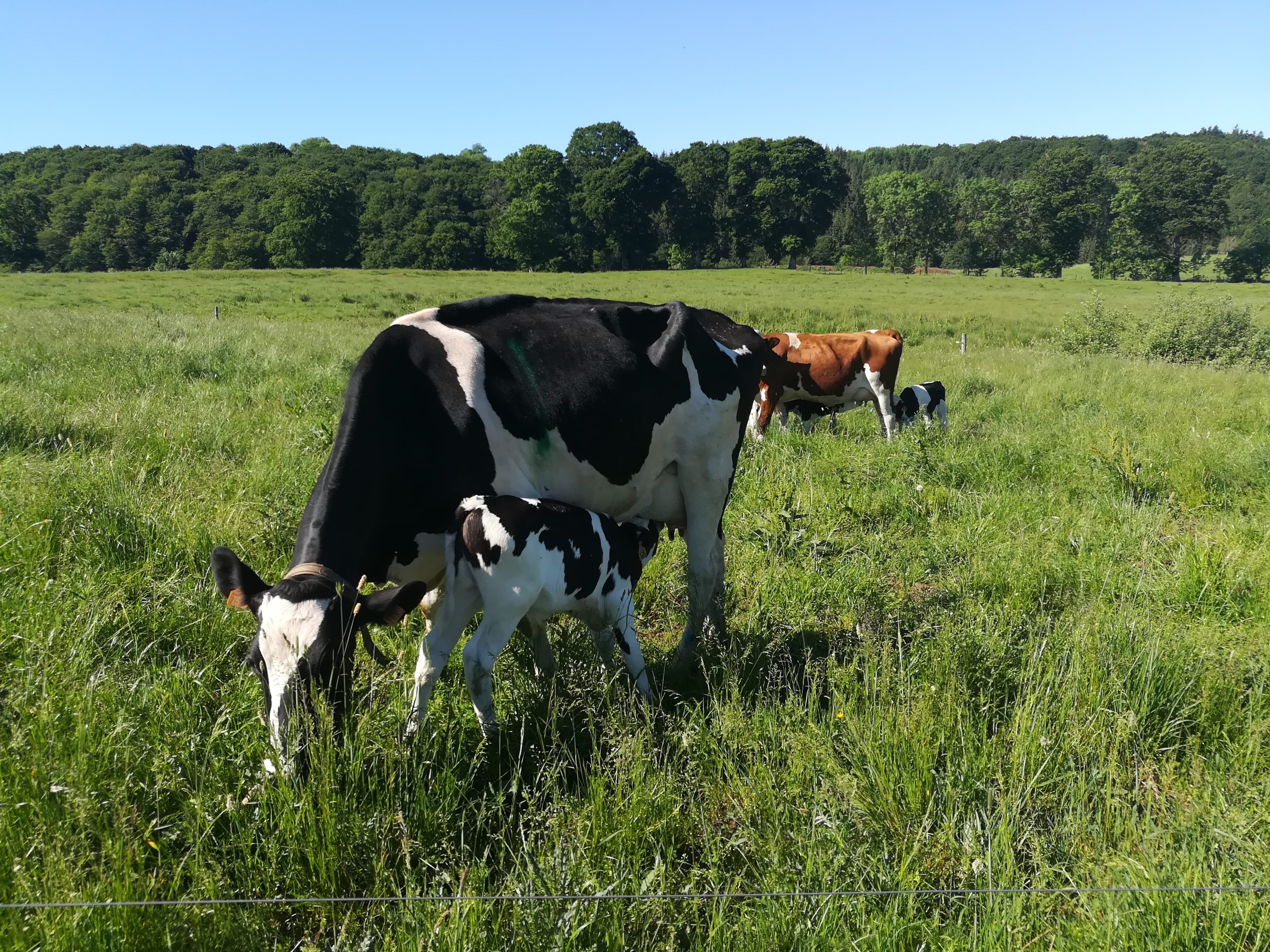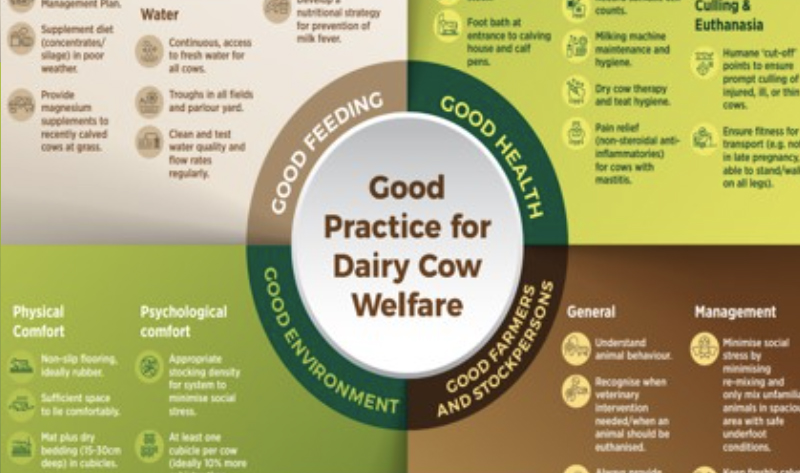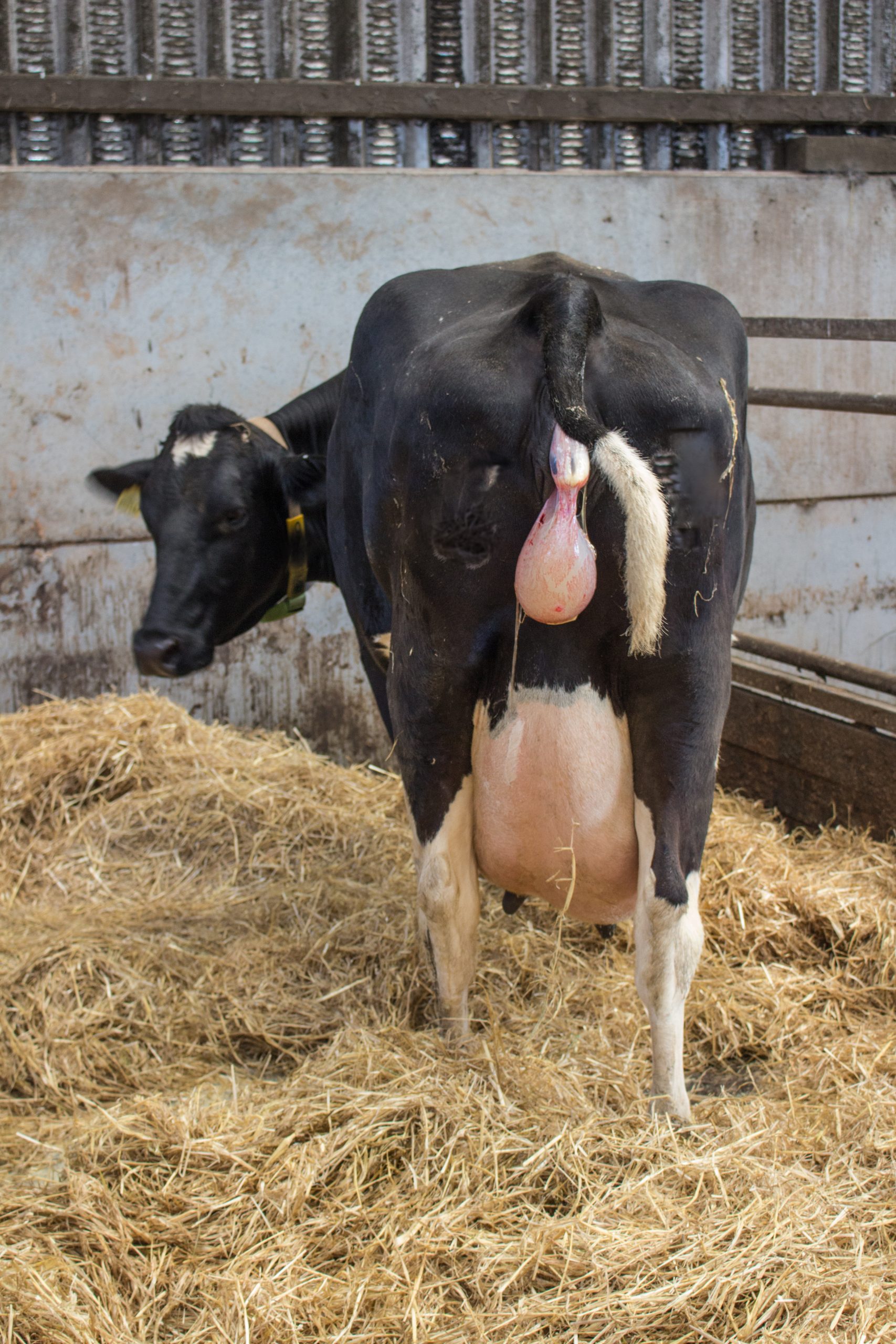Dairy Cows
Care4Dairy has developed best practice guides on four key life stages in dairy production: dairy calves, heifers, lactating cows and end- of- career cows. Each best practice guide is a compilation of fact sheets that summarise the latest scientific and technical evidence to support animal welfare. They adopt a user-friendly solutions-based approach and have been developed in partnership with the dairy sector.
Each fact sheet describes good and best practice and is structured according to four key pillars of animal welfare: feeding, housing, health and behaviour. Some topics may be relevant to more than one life stage and this is indicated at the start of each factsheet.
The life stages are characterised as follows:
- calves are defined as bovines from birth to 6 months of age
- heifers are usually 7-24 months of age
- adult cows are 2 years plus
- end of career- animals can be any age between 2 years old until the end of their productive life either due to natural culling, illness or injury
Information on the care of bulls has been indicated in the relevant text, although this life stage group was not within the direct scope of Care4Dairy.
In addition to the guides, several EU member states have shared examples of “success stories” where best practice solutions have been used in training, on farm assessments and communication tools. Further resources are provided to support the best practice guides.
Factsheets
Success Stories
There are a number of initiatives currently being implemented in the EU and beyond, to encourage adoption of welfare friendly practices on dairy farms. In this section we highlight examples where groups have successfully collaborated to share resources on animal welfare topics with farmers. Farmers have been involved in the design of many of these tools.
These resources combine a range of formats, all designed to encourage adoption of animal welfare friendly practices on farm:
- Exchanging information and practices between peers, including short videos from farmer to farmer
- Initiatives to support transition to best practice
- Infographics which summarise good and best practice, in a concise and easy to read format





